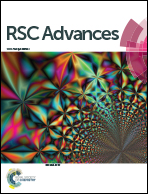Rumen tissue derived decellularized submucosa collagen or its chitosan-treated film as a cutaneous wound healant and 1H NMR-metabolite profiling of plasma
Abstract
Developing an ideal wound dressing material for skin defects is of significant importance in a clinical emergency and is currently a global burden. Decellularized extracellular matrix derivatives from various xenogeneic origins have been successfully used as dermal substitutes, since they contain perpetuated bioactive molecules that serve as a regenerative template for faster dermal reconstruction. The major objective of this study is to evaluate the in vivo biocompatibility of an un-tapped type I collagen film (COL-F) derived from bovine rumen submucosa, in comparison to the same COL-F treated with 1% (w/v) chitosan solution to produce another film, COL/CS-F. The comparative study includes the evaluation of physical and biological properties of the films in treating open excision wounds in rats. Both COL-F and COL/CS-F were observed to possess excellent fluid uptake ability, good water retention and controlled degradation kinetics. The topical application of the films resulted in exquisite wound healing on day 16, with wound contraction rates of 92.83% ± 0.95% and 94.83% ± 0.46% for COL-F and COL/CS-F, respectively. The estimation of biochemical parameters (collagen, hexosamine and uronic acid) was correlated with histological observations, which elucidate the evidence for effective collagen synthesis and tissue vascularisation as a result of better wound prognosis. The metabolomics of the wound healing phase was acquired by nuclear magnetic resonance (NMR) spectroscopy, which demonstrated time-dependent up and down regulation of metabolites in response to injury. Overall, the presence of chitosan in the COL-F accelerated wound healing by exerting relevant biomimetic and chemotactic effects at the wound surface. The ability of COL-F and COL/CS-F to treat open wounds with favourable tissue re-epithelization and remodelling at a shorter duration demonstrates its potential feasibility in the field of skin tissue engineering.


 Please wait while we load your content...
Please wait while we load your content...